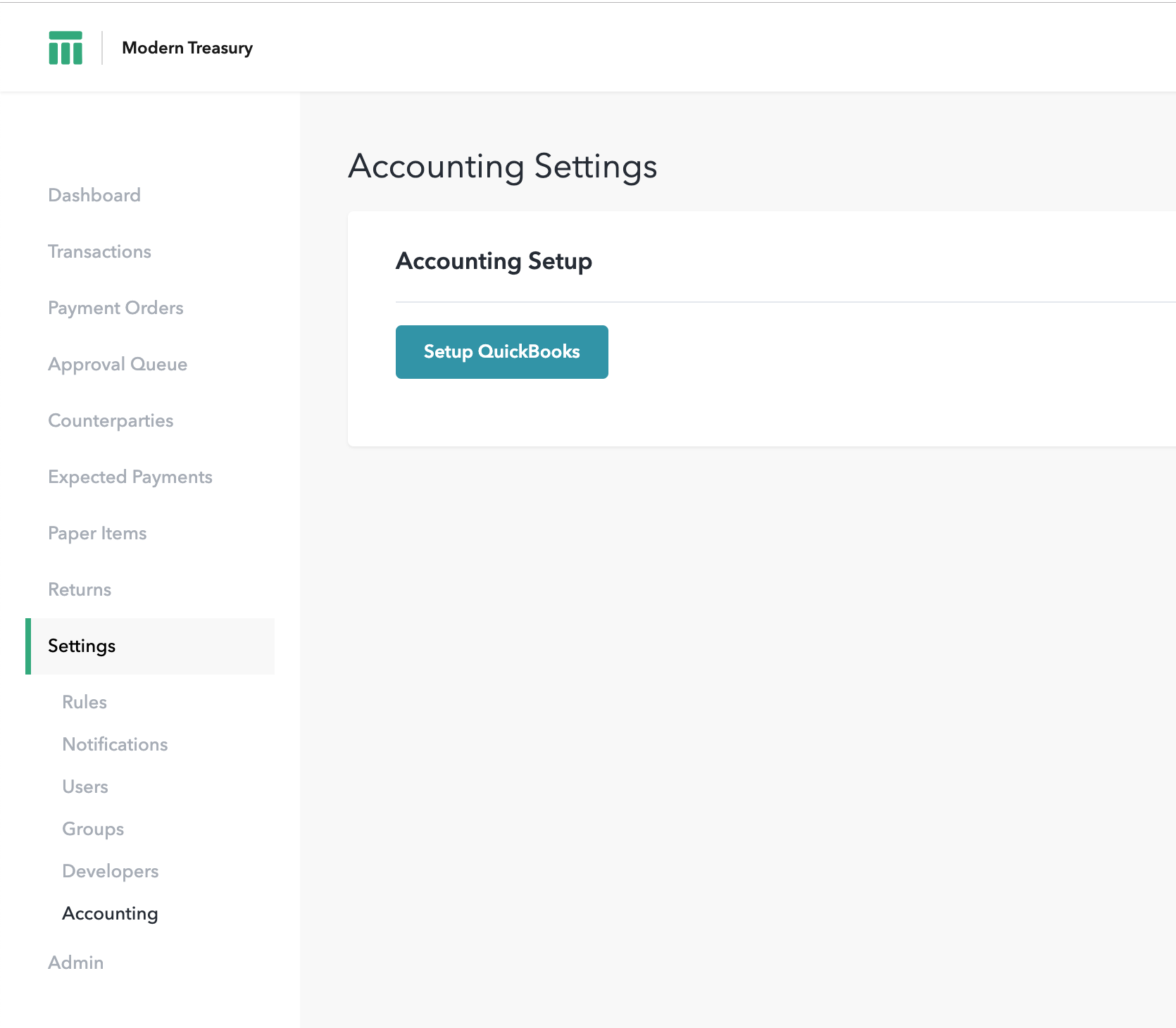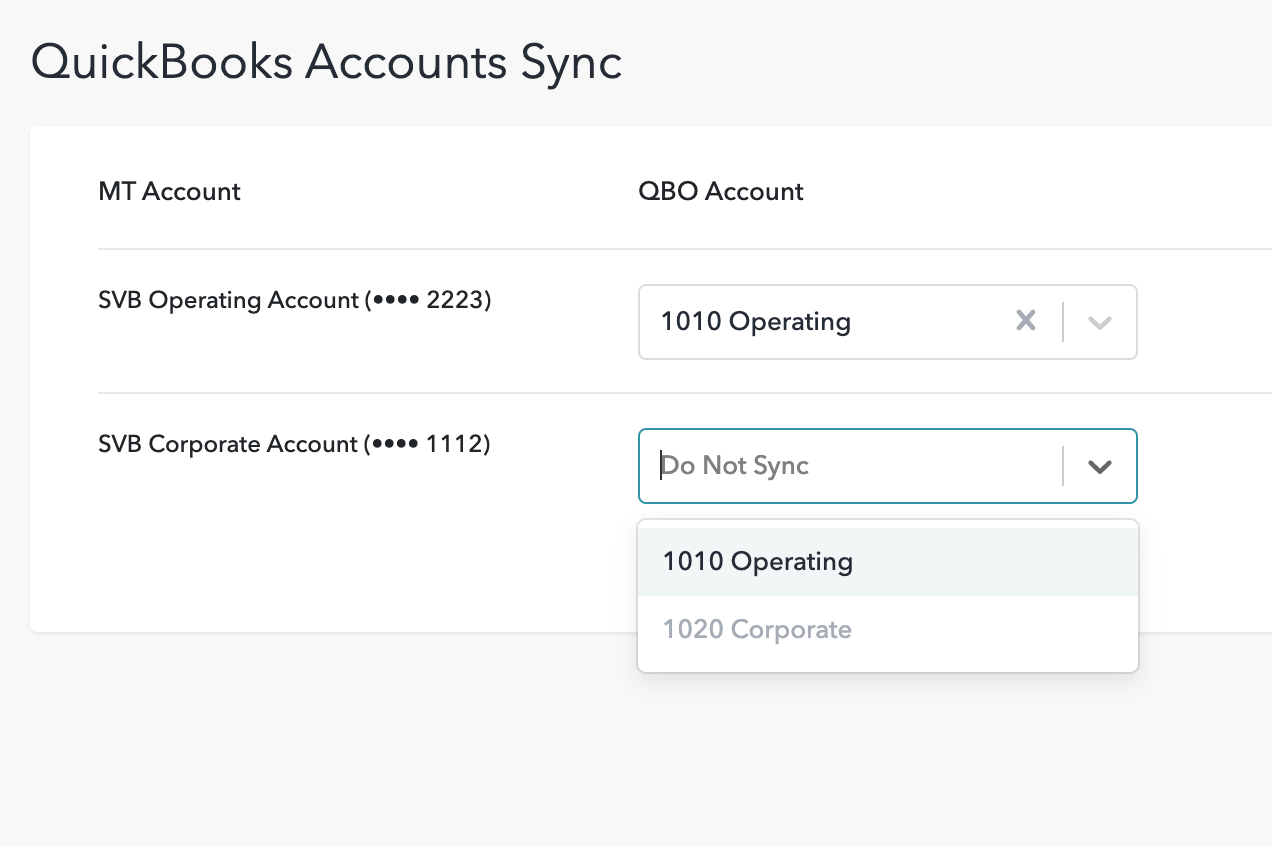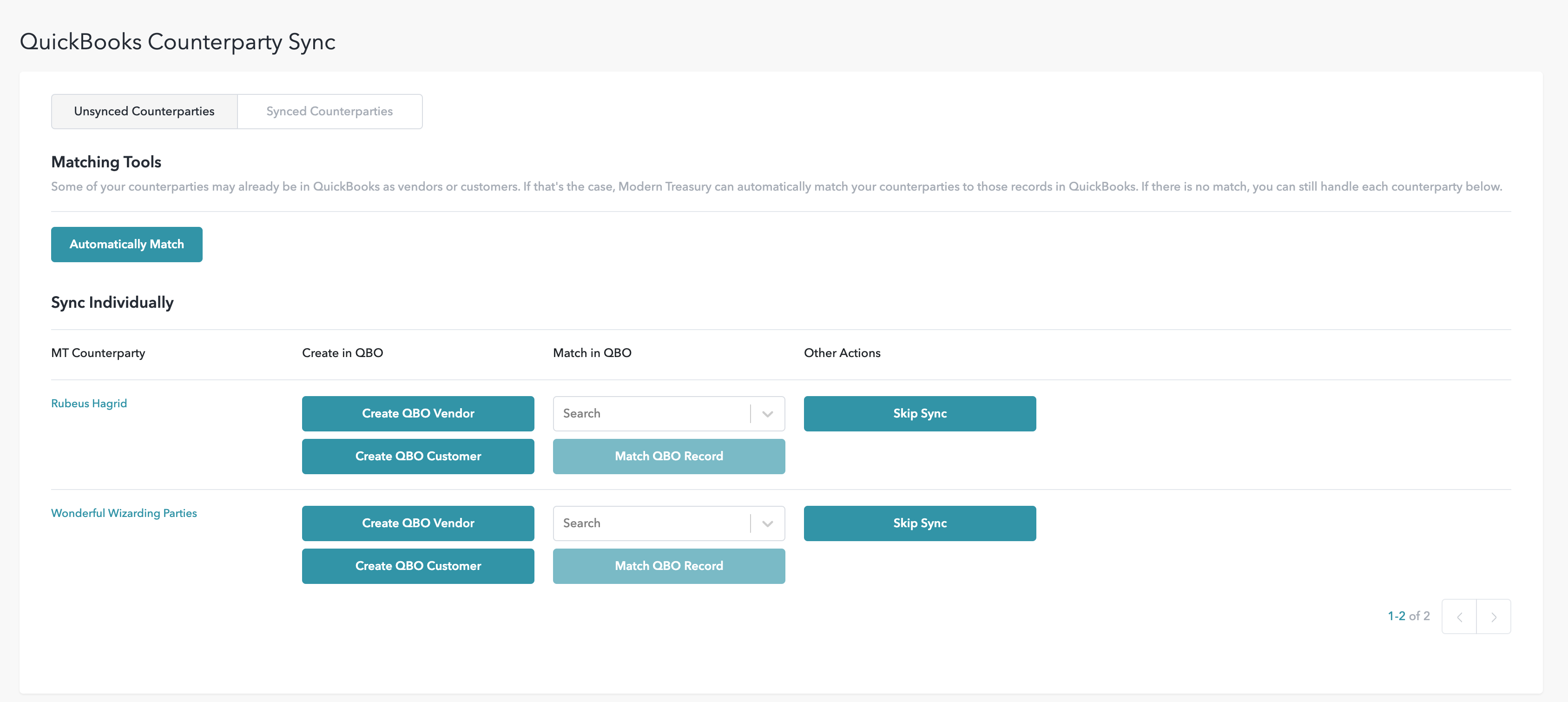Connect QuickBooks Online
A step-by-step guide to setting up your integration with QuickBooks
The option to setup your QuickBooks account with Modern Treasury is only enabled for organization admins.
1. Connect your QuickBooks Online account
To begin setting up your QuickBooks integration, visit your Accounting Settings page and click to begin setup.

You will be redirected to QuickBooks, where you grant access to Modern Treasury.
If you are not an admin for your QuickBooks account, you may not be able to give access. In that case, ask one of your colleagues to do this step.
Once you have granted access, you will be redirected back to Modern Treasury.
In a rush?We have two setup steps for you to do, although if you are busy, you can complete them later.
2. Map Bank Accounts
On this page, you will see a list of the bank accounts you have connected to Modern Treasury through your bank. Next to each account is a dropdown with a list of all the bank accounts in QuickBooks.

To match the Modern Treasury account, simply select the corresponding QuickBooks account in the dropdown. This is required in order to sync payments that originate from your bank account. Additionally, if you are doing internal transfers between your bank accounts, you need to match both the sending and receiving bank accounts.
3. Map Counterparties
This page lets you map your Modern Treasury counterparties to your vendors and customers in QuickBooks. You'll notice that we give two ways for you to do this:

Automatic Matching
Every customer, vendor, and employee in QuickBooks has a unique name. This means that when we see a customer with a name like "John Smith", we can say with certainty that there is no other "John Smith" customer, vendor, or employee.
Since many of your Modern Treasury counterparties likely have the same name as how you entered them in QuickBooks, you can use the Automatically Match button on this page to link them together. It will only tie them together when their names match exactly. In cases where they don't match automatically, you will sync them individually.
Manual Matching
All of your unsynced counterparties are displayed in this section. Only 25 are shown at a time, but you can navigate between pages on the bottom right.
For every unsynced counterparty, you have three options available to you:
-
Create a new record in QuickBooks for them. You can create them as either a vendor or a customer. This is recommended when you have a new counterparty that is not in QuickBooks yet.
-
Match to an existing record in QuickBooks. You can search the dropdown, which contains all of your customers and vendors from QuickBooks. This is helpful when you have a different name for your counterparty in QuickBooks,

- You can skip any counterparty that you don't want to sync.
View Synced Counterparties
If you want to view which counterparties have been synced to QuickBooks, you can
click over to the Synced Counterparties view.

From here, you can click a link to view the synced record in QuickBooks. Sometimes there is intermittent behavior where the link doesn't work the first time. If that occurs, try clicking it again.
Delete a sync
What is a sync?A "sync" is simply a matching between a record in Modern Treasury and your accounting software. A sync tells Modern Treasury to either automatically sync or enqueue for manual syncing.
You can delete any sync in the dashboard. Note that this doesn't delete the customer or vendor in QuickBooks. Instead, it just removes the association between the counterparty and the record in QuickBooks.
Next StepsOnce your account is connected to QuickBooks, you will have a dashboard accessible on your Accounting Settings page. From here, you can update any bank account or counterparty mappings at a later point. Additionally, you will visit your accounting dashboard to begin syncing your payment orders to QuickBooks.
Updated about 1 month ago